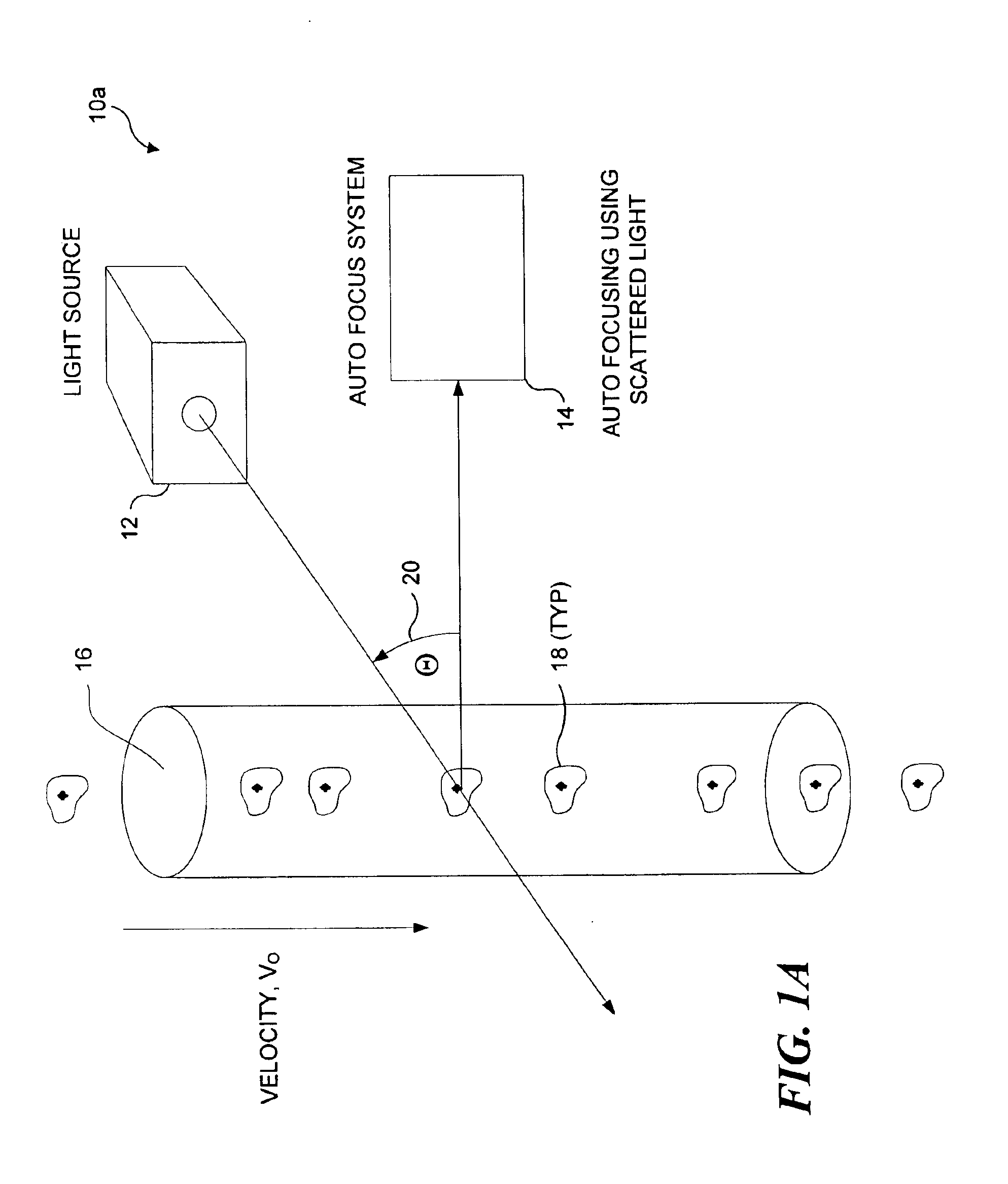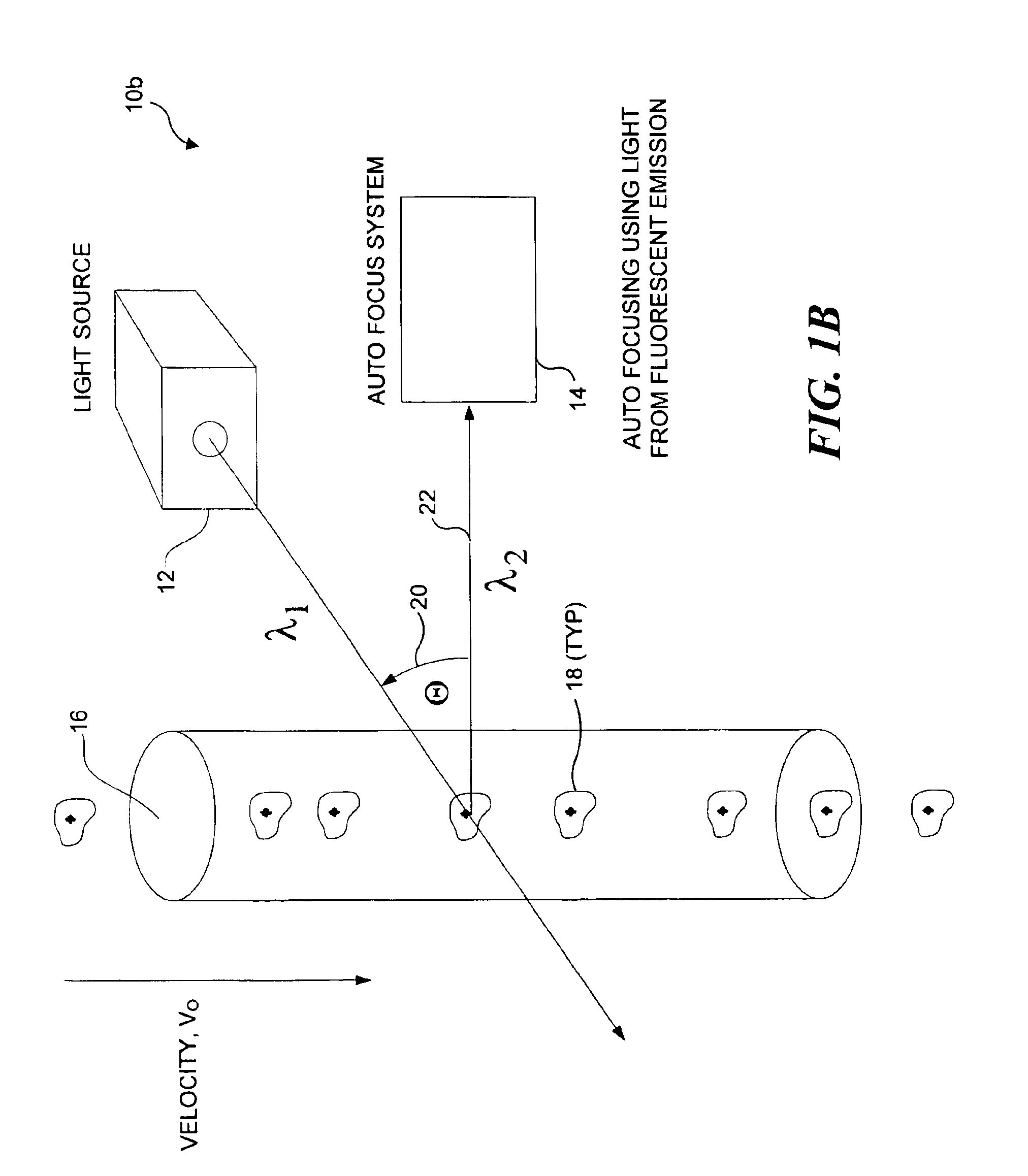Auto focus for a flow imaging system
a flow cytometry and autofocus technology, applied in the field of automatic focus of optical systems, can solve the problems of insufficient insufficient detail of information generated by these mature technologies, and inability to accurately determine the spatial resolution of prior art flow cytometry, etc., and achieve the effect of less modulation
- Summary
- Abstract
- Description
- Claims
- Application Information
AI Technical Summary
Problems solved by technology
Method used
Image
Examples
Embodiment Construction
Overview of the Present Invention
The present invention relates auto focusing systems and methods. Preferably, the present invention is implemented in a flow imaging system. However, the present invention can be used for applications not only where objects are entrained in a flow of fluid passing through an imaging system, but also wherever there is relative movement between objects of interest and the imaging system. In accord with the present invention, auto focusing is achieved by diverting light from an object along two optical legs (or more preferably, two light paths), each of which includes an optical grating that modulates light from the object such that the modulated light has a frequency proportional to the velocity of the object.
Each of the two modulation paths also includes a detector configured to receive the modulated light. The optical gratings are disposed in different positions in each modulation path relative to a point along each modulation path where an image of t...
PUM
| Property | Measurement | Unit |
|---|---|---|
| diameter | aaaaa | aaaaa |
| diameter | aaaaa | aaaaa |
| diameter | aaaaa | aaaaa |
Abstract
Description
Claims
Application Information
 Login to View More
Login to View More - R&D
- Intellectual Property
- Life Sciences
- Materials
- Tech Scout
- Unparalleled Data Quality
- Higher Quality Content
- 60% Fewer Hallucinations
Browse by: Latest US Patents, China's latest patents, Technical Efficacy Thesaurus, Application Domain, Technology Topic, Popular Technical Reports.
© 2025 PatSnap. All rights reserved.Legal|Privacy policy|Modern Slavery Act Transparency Statement|Sitemap|About US| Contact US: help@patsnap.com



